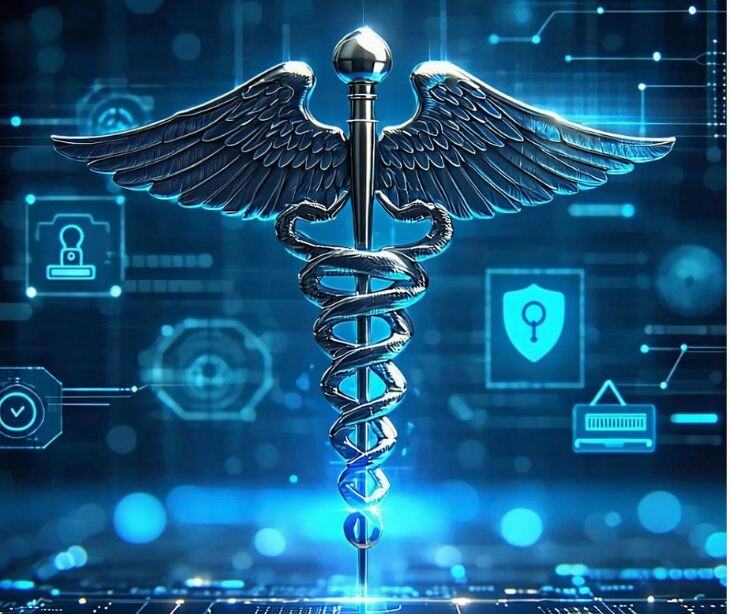%20-%202024-10-29T155839.257.jpg)
To comply with HIPAA, it’s best to follow a roadmap of the most important aspects of compliance. Below is a checklist of what you can do for your organization to maintain security and ensure compliance.
Understanding HIPAA's applicability
HIPAA's administrative simplification provisions apply to many entities, including health plans, healthcare clearinghouses, and healthcare providers that transmit health information electronically in connection with specific transactions. These entities are classified as covered entities under HIPAA.
Additionally, business associates – organizations that create, receive, maintain, or transmit PHI on behalf of covered entities – are subject to specific HIPAA requirements.
To determine your organization's HIPAA status, conduct a self-assessment to review your operations, identify the health information you handle, and assess whether you qualify as a covered entity or a business associate.
Assessing your HIPAA compliance obligations
Once you've established your organization's HIPAA status, the next step is to assess your specific compliance obligations. HIPAA comprises several interconnected rules and regulations, each with its unique set of requirements and standards.
- The privacy rule establishes national standards for protecting individuals' medical records and other identifiable health information, regardless of the format in which it is created, received, maintained, or transmitted. It governs the use and disclosure of PHI, outlines individuals' rights over their health information, and mandates the implementation of appropriate safeguards to protect privacy.
- The security rule focuses on electronic protected health information (ePHI), and sets requirements for ensuring the confidentiality, integrity, and availability of ePHI. It encompasses administrative, physical, and technical safeguards, as well as organizational requirements for covered entities and business associates.
- The breach notification rule requires covered entities and business associates to notify affected individuals, the Department of Health and Human Services (HHS), and, in certain cases, the media, in the event of a breach involving unsecured PHI. It outlines the procedures for reporting and responding to such incidents.
Establishing a HIPAA compliance program
Achieving and maintaining HIPAA compliance is an ongoing process that requires a well-organized program. Here are the components to consider:
Designating HIPAA officers
The first step in establishing a HIPAA compliance program is to designate qualified individuals to oversee and manage the process. These roles typically include:
- HIPAA privacy officer: Responsible for developing, implementing, and enforcing policies and procedures related to the privacy rule, this individual ensures that PHI is handled in compliance with HIPAA standards.
- HIPAA security officer: This role focuses on implementing and maintaining the administrative, physical, and technical safeguards required by the security rule to protect the confidentiality, integrity, and availability of ePHI.
Conducting risk assessments
Regular risk assessments are necessary for identifying potential vulnerabilities and threats to the privacy and security of PHI within your organization. These assessments should:
- Identify the PHI your organization creates, receives, stores, and transmits, including information shared with consultants, vendors, and business associates.
- Evaluate human, natural, and environmental threats to the integrity of PHI, both intentional and unintentional.
- Assess existing measures to protect against identified threats and determine the likelihood of a reasonably anticipated breach occurring.
- Analyze the potential impact of a PHI breach and assign risk levels based on the likelihood and potential consequences.
Developing policies and procedures
Well-documented policies and procedures form the backbone of an effective HIPAA compliance program. These guidelines should cover various aspects of HIPAA compliance, including:
- Use and disclosure of PHI, including procedures for obtaining authorizations.
- Safeguarding the privacy and security of PHI, such as access controls, encryption, and incident response protocols.
- Workforce training and awareness programs to ensure all employees understand their responsibilities to maintain HIPAA compliance.
- Procedures for managing patient access requests, correction requests, and data transfer requests.
- Breach notification protocols, including procedures for reporting incidents to the appropriate authorities and affected individuals.
Implementing safeguards and controls
HIPAA compliance requires organizations to implement safeguards to protect PHI. These safeguards encompass administrative, physical, and technical aspects, such as:
- Administrative safeguards: Establishing policies and procedures for workforce management, risk assessments, contingency planning, and business associate agreements.
- Physical safeguards: Implementing measures to control physical access to facilities, workstations, and devices containing PHI, and ensuring proper disposal and re-use of media containing ePHI.
- Technical safeguards: Implementing access controls, audit controls, integrity controls, and transmission security measures to protect ePHI from unauthorized access, alteration, or disclosure.
Workforce training and awareness
A knowledgeable and properly trained workforce helps maintain HIPAA compliance. Training programs should include various aspects, such as:
- Understanding what constitutes PHI and the importance of protecting it.
- Familiarizing the organization with HIPAA policies and procedures, including their roles and responsibilities.
- Providing security awareness training to recognize and respond to threats, such as phishing attempts or social engineering tactics.
- Establishing channels for reporting HIPAA violations or concerns, and outlining the consequences of non-compliance (sanctions policy).
Monitoring and auditing
Ongoing monitoring and regular audits are necessary for maintaining HIPAA compliance and finding areas for improvement. This process may involve:
- Conducting internal audits to assess compliance with HIPAA policies and procedures.
- Monitoring user activity and system logs to detect potential violations or security incidents.
- Reviewing and updating policies and procedures to reflect changes in regulations, best practices, or organizational requirements.
- Evaluating the effectiveness of training programs and making necessary adjustments.
Leveraging technology for HIPAA compliance
Secure communication and collaboration tools
Use secure messaging, video conferencing, and file-sharing tools designed for healthcare to protect PHI. These tools offer encryption, access controls, and audit trails to secure communication.
Identity and access management (IAM)
Implement IAM solutions to control access to PHI. These tools provide role-based access, strong authentication, and audit logs to protect sensitive information.
Data encryption and pseudonymization
Encrypt PHI and use pseudonymization to enhance data privacy. Encryption protects data during storage and transmission, while pseudonymization replaces identifiable data with codes to protect privacy.
Risk management and compliance platforms
Use risk management platforms to streamline HIPAA compliance tasks such as risk assessments, policy management, and incident reporting. These platforms offer centralized dashboards and automated workflows to manage compliance efficiently.
Cloud computing and managed services
Cloud services and managed IT functions can support compliance efforts. Ensure that providers are HIPAA compliant and enter into business associate agreements (BAAs) to secure data and services.
Navigating regulatory audits and investigations
Preparing for audits and investigations
Keep thorough records of HIPAA compliance efforts and have protocols to respond to audit requests. Designate a contact person and ensure timely responses to inquiries.
Cooperating with regulatory authorities
Fully cooperate during audits to show your commitment to compliance. Provide clear responses, address deficiencies quickly, and maintain open communication.
Addressing findings and implementing corrective actions
If issues are identified during an audit, address them promptly. Update policies, enhance training, and implement new safeguards as needed. Develop a corrective action plan with specific steps, responsibilities, and timelines.
Related: How to prepare for a HIPAA audit
In the news
In a recent interview, OCR Director Melanie Fontes Rainer revealed that the HHS has proposed regulatory revisions related to the HIPAA security rule. These updates are modernizing the 20-year-old regulation and address changes in healthcare, including reliance on online services and the need for encryption. According to Rainer, the security rule's technology-neutral and scalable nature has allowed for its continued enforcement, but the proposed changes seek to reflect the current state of healthcare delivery.
Rainer said the OCR plans to reinitiate the HITECH audit program, which will focus on the security rule and target security risk analyses and risk management. With limited resources, OCR is trying to drive voluntary compliance, and these audits will serve as an educational tool for HIPAA-regulated entities. Healthcare providers should be prepared for the possibility of a HITECH audit in the coming year, as OCR seeks to ensure that organizations have an understanding and implementation of the security rule's requirements.
FAQs
Who does HIPAA apply to?
HIPAA applies to covered entities, which include healthcare providers, health plans, and healthcare clearinghouses. It also applies to business associates of these covered entities. These are entities that perform certain functions or activities on behalf of the covered entity.
What tools can I use to ensure HIPAA compliance?
There are various tools available to assist with HIPAA compliance, including HIPAA compliance software, secure email solutions, encryption technologies, and training programs. Choose tools that align with your organization's specific needs and requirements.
Learn more: HIPAA Compliant Email: The Definitive Guide


%20-%202024-11-30T133454.375.jpg)

